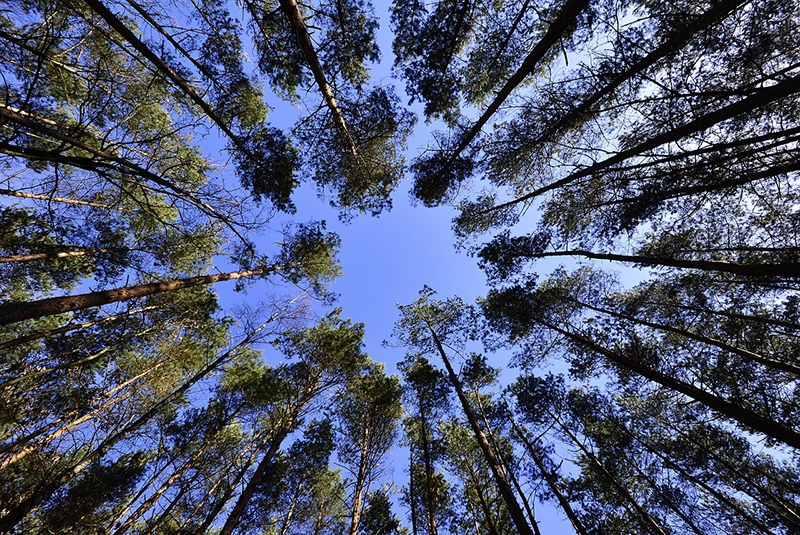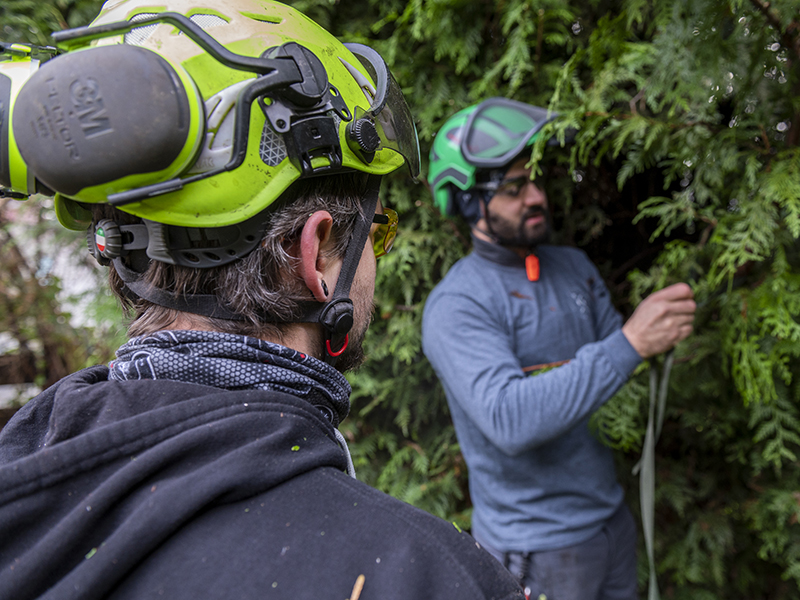Trees aren’t decorations. In Metro Vancouver, they’re part of your home’s safety, your block’s curb appeal, and (if you’re smart) your long-term strategy for property value. A healthy tree costs less to maintain than one ignored. These ten tips will help you get the most out of your trees across seasons.
1. Start With the Right Tree for the Location
Start with the right tree species for your site. Not every tree is suitable for close proximity to power lines or sidewalks.
Are you in a townhouse complex, apartment building, or a detached home with room to grow?
Always pick based on space, sun, and function. Want low maintenance? Stick with native species.
Want food? Fruit trees need more pruning, but give back.
Your goal is healthy growth, not conflict with city property.
Also before purchasing or putting a spade in the ground, check your local municipality’s tree bylaw for planting requirements for replacement trees.

2. Plant It the Right Way or Pay for It Later
Planting trees sounds simple, but mistakes here haunt you later.
The hole should be twice as wide as the tree’s root ball but not deeper. Compact soil around the base of the tree is a killer.
When it comes to newly planted trees, it’s all about timing.
Aim for fall (or through winter depending on your location and local temps) or early spring, when roots can get established without heat stress.
And skip the fertilizer in year one. Focus on healthy soil and watering discipline.
3. Water Like You Mean It (But Don’t Overdo It)
You don’t need fancy equipment, just consistent habits.
Aim for about 37 litres per 2.5cm of trunk diameter in the summer months per week. This roughly equates to twice a week on drip for 20mins.
- Deep soaks encourage a strong deep root system.
- Shallow, frequent watering leads to weak roots and stress during hot summer periods.
- Avoid pooling or runoff. That’s wasted time and much water.
- During a heatdome add an additional watering.
4. Use Mulch, Not Gravel
A 5cm to 10cm ring of mulch keeps soil cool, blocks weeds, and reduces evaporation.
Go organic. Use wood chips, compost, or bark. Keep it away from the base of the tree—no volcano piles.
Mulch helps protect young trees and older ones. It also guards against invasive species that take advantage of stressed root zone, not to mention it soaks up excess water and releases it when required during dry periods.
5. Prune With Purpose
Random cuts hurt more than they help. Proper pruning, done in the right season, supports form, balance, and strength.
- Remove dead branches, diseased branches, or any that rub or cross.
- Skip the ladder and leave high work to a tree care professional.
- Never top a tree. It weakens the structure and shortens the life span.
- Allow a tree to establish before pruning, this is typically 3 years after planting when the roots have developed into the host soil and the tree is better equipped to handle the prune.
A tree pruning plan done right once will pay off over the years.
6. Don’t Wait for Pests or Diseases to Show Up
Early detection is everything.
Yellowing leaves, weird growth patterns, or sawdust near the trunk usually point to pest problems or rot.
Once decay shows, recovery costs more and takes longer to remedy.
The smart move is to bring in a professional arborist before it becomes an issue.
They can assess whether you’re dealing with stress, disease, or damage and recommend a fix that protects the tree’s health.
7. Give Roots Breathing Room
Avoid compacting the soil around the base of the tree—no foot traffic, no parked cars, and definitely no raised planters.
Compaction suffocates root systems, which are already competing for space in many urban forestry zones.
Keep a clear radius; if you’re landscaping, work around the tree rather than over it.
8. Protect Trees During Construction or Renovations
Tree protection must be part of the plan if you’re renovating your home, putting in a driveway, or doing yard work.
Roots can stretch farther than you think, and cutting into them can trigger long-term decline.
For bigger projects or new developments, a certified arborist or ISA-certified arborist should draft a tree protection strategy before work starts.
Vancouver’s Urban Forestry guidelines make this a requirement in many cases.
9. Think in Decades, Not Months
Trees that get routine care rarely cause problems.
The ones that get ignored? Those show up later on emergency preparedness lists.
Think of seasonal tree inspections as preventative maintenance. You do it for your furnace, your car, and your roof.
Trees deserve the same treatment. It’s the difference between steady upkeep and a sudden call to a tree removal crew after a storm.
As an existing client of DAS you are entitled to a free yearly inspection to ensure the health and vitality of your asset.

10. Work With a Certified Arborist Who Knows Vancouver
A good tree care professional knows when to act, what to cut, and when to walk away.
They also know how to write a proper arborist report, protect fruit trees, and maintain compliance with city hall guidelines.
Hiring an ISA-certified arborist means hiring someone trained to work under pressure and follow the standards set by the International Society of Arboriculture.
That matters more now, as climate change, denser housing, and aging infrastructure create new challenges for urban trees.
Call Devine Arboricultural Solutions Today
Tree care tips don’t have to be guesswork.
Stick to the fundamentals and make time for inspections, seasonal adjustments, and structural pruning.
Whether you are a property owner managing an oversized lot or a homeowner with one tree near your living room, consistent care protects your assets and supports public spaces across Metro Vancouver.
Do you have questions?
Devine Arboricultural Solutions offers expert tree care for residential and commercial properties across Vancouver, BC.
